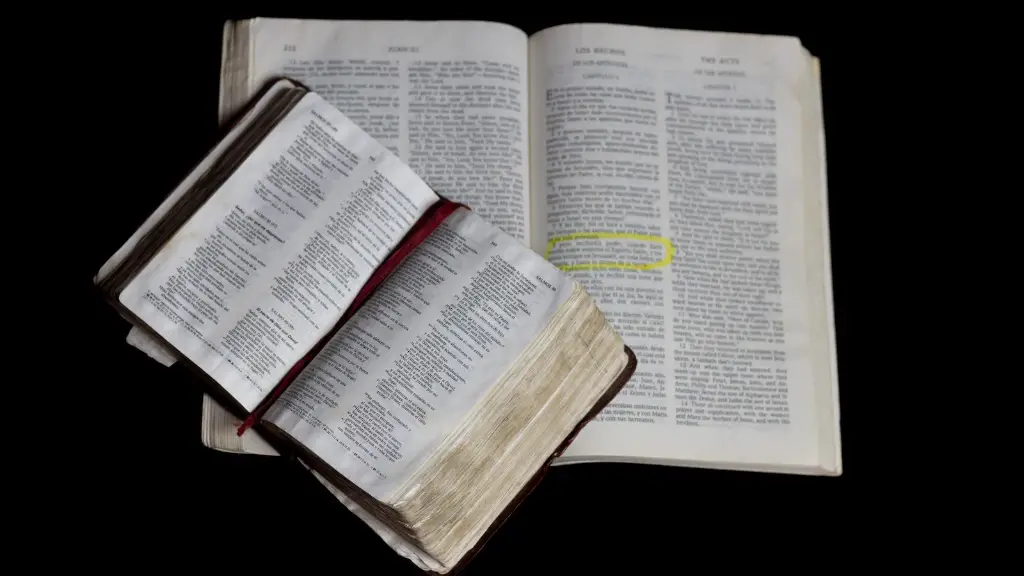The term “textual criticism” is used to describe the science of ascertaining the original text of a document from its extant copies. The term is also applied to the recovery of lost or inaccessible texts. In the case of the Bible, textual criticism is the study of ancient manuscripts in order to determine the original wording of the biblical text.
With the discovery of the Dead Sea Scrolls in 1947, textual critics now had access to biblical manuscripts that were over 1,000 years older than any previously known. These manuscripts provided invaluable insight into the wording of the original text of the Bible.
Textual criticism is an important tool for understanding the Bible. By carefully examining the ancient manuscripts, textual critics can get a better sense of what the biblical authors actually wrote. This can help us to understand the meaning of the Bible better.
The textual criticism of the Bible is the process of examining the text of the Bible in order to identify its original form and meaning. This process can involve the study of the physical characteristics of the text, the history of the text, and the linguistic context in which the text was written.
What is textual criticism in the Bible?
Textual criticism of the New Testament is the identification of textual variants, or different versions of the New Testament. The goals of textual criticism include identification of transcription errors, analysis of versions, and attempts to reconstruct the original text.
Textual criticism is a science and an art that is concerned with documents written by hand. It is involved in the discovery and reading of manuscripts, cataloguing their contents, and, for literary works, collating the readings in them against other copies of the text.
Why is textual criticism of the Bible important
Textual criticism is a field of study that can be used to help identify the original text of an ancient document. This approach uses both external and internal evidence to determine what the original text may have said. Contrary to popular belief, the Bible is a remarkably trustworthy ancient document. This makes textual criticism a valuable tool for those who wish to study the Bible in its original form.
Textual criticism is the study of ancient manuscripts in order to determine the original reading of the Bible. This is important because there are often differences between manuscripts, and it can be difficult to know which one is the original. For example, in 1 Corinthians 13:3, there are two different readings found in ancient manuscripts. One reading says that love is patient and kind, while the other says that love is patient, kind, and enduring. So which one is the original? Textual criticism can help us to determine which reading is more likely to be the original, based on a number of factors.
What are the four types of biblical criticism?
Textual criticism is the process of examining a text to determine its authenticity. This process can be applied to any type of text, but is most commonly used in the field of biblical studies. Textual criticism can be divided into several sub-disciplines, each of which focuses on a different aspect of the text. Some of these subdivisions are: textual criticism, source criticism, form criticism, redaction criticism and other criticisms under literary criticism.
There are many apparent contradictions in the Bible. For example, Exodus 20:8 says to remember the Sabbath day and keep it holy, while Ecclesiastes 1:4 says that the earth abides forever. Other apparent contradictions include human sacrifice, the power of God, personal injury, and circumcision.
What are the rules of textual criticism?
Textual criticism is the academic discipline of analyzing and comparing different versions of texts, in order to establish the most accurate version of the original text. There are twelve basic rules that scholars use when practicing textual criticism:
1. Only one reading can be correct, no matter how difficult it is to decide.
2. There is no place to propose a solution not contained in a text.
3. Readings are determined by both external and internal criteria.
4. Textual criticism begins with external evidence.
5. Internal evidence is used when external evidence is wanting or when it does not seem to lead to a satisfactory conclusion.
6. The burden of proof rests on those who would reject the commonly received reading.
7. The difficult reading is to be preferred over the easy reading.
8. The shorter reading is to be preferred over the longer reading.
9. The reading that gives the best sense is to be preferred over the one that does not make sense.
10. The reading that brings the text into agreement with other passages is to be preferred over the one that does not.
11. The reading that is attested by the most number of witnesses is to be preferred
The process of textual criticism contains three stages: recensio, examinatio, and emendatio. Recensio is the stage where the text is collated and compared with other versions of the same text. Examinatio is the stage where the text is examined for errors and corruptions. Emendatio is the stage where the text is corrected.
What are the types of textual criticism
Textual criticism is the process of evaluating and comparing different versions of a text in order to determine which is the most accurate. There are three different approaches that can be taken: eclecticism, stemmatics, and copy-text editing.
Eclecticism involves taking into account all available versions of a text and weighing the evidence in order to arrive at the most probable original reading. Stemmatics is a more systematic approach that traces the evolution of a text through its manuscript tradition. Copy-text editing involves choosing one particular version of a text as the basis for a new critical edition.
Each of these approaches has its own strengths and weaknesses, and which one is used will depend on the nature of the text being studied.
The Bible is not an unreliable authority. It does not contain numerous contradictions. The few contradictions that are in the Bible do not prove that the book is not infallible.
What is the problem with Bible translation?
As mentioned, one of the main problems with Bible translation is that we do not have the original manuscripts of the Bible. This means that we are working with copies of copies of copies, and it can be difficult to know which of these is the correct version. This can lead to errors in translation, as well as frustration and confusion for those who are trying to read and understand the Bible.
Benedict Spinoza was a Dutch philosopher who is considered to be one of the key figures in the development of biblical criticism. In 1656, he published a work entitled Tractatus Theologico-Politicus, in which he argued that the Bible should be interpreted in a historical and critical manner, rather than blindly accepting it as divine revelation. This work was denounced by the Inquisition, and Spinoza was forced to renounce his views. Nevertheless, his work laid the foundation for the later development of biblical criticism.
What are the 3 types of textual evidence
Fact: Evidence that can be verified as true or false through objective means.
Judgment: Evidence that is based on the opinion of an expert.
Testimony: Evidence that is based on the personal experience of an individual.
In order to do a textual analysis, there are key elements that you need to keep in mind. First, you need to have a summary of the text. This will help your readers understand what you are trying to analyze. Secondly, you need to pay attention to the context of the text. This will help you interpret the text correctly. Lastly, you need to have reasonable support for your conclusions.
How reliable are the Old Testament documents?
The accuracy of the Old Testament copying is extremely important, as it is the foundation of our understanding of Scripture. The scribes who copied the Old Testament documents were very meticulous in their work, counting not only words, but also characters. If the numbers did not match, they would go back and recheck their work. This attention to detail helped to ensure that the Old Testament we have today is an accurate representation of the original documents.
The Bible is full of different genres of literature, from wisdom literature to psalms to prophecy to apocalyptic literature. Each genre has its own unique style and focus, and each offers insights into the nature of God and humanity. Whether you’re looking for guidance on how to live your life, or you’re wanting to hear about the end times, the Bible has something to offer you.
How many contradictions are there in the Bible
There is no such thing as a “self-contradiction.” A self-contradiction would imply that something is both true and not true, which is logically impossible.
Biblical criticism is the process by which scholars study the Bible in order to understand its meaning and origins. There are a number of different approaches to biblical criticism, each of which has its own strengths and weaknesses. As with any area of academic study, there is debate among scholars about which approach is the best.
Warp Up
Textual criticism of the Bible is the science of examining and evaluating the accuracy of biblical texts. The goal of textual criticism is to determine the original wording of the biblical texts as they were originally written. This is done by comparing the various extant biblical manuscript traditions and determining which readings are most likely to be the original ones.
Textual criticism is the study of how the Bible was transmitted over time, how it was copied and translated, and how the different versions of the Bible differ from each other. It is a critical tool for understanding the Bible and its history.





